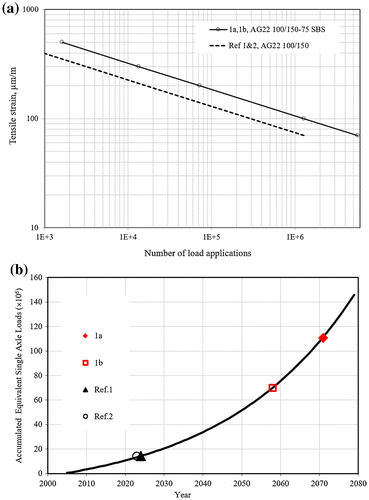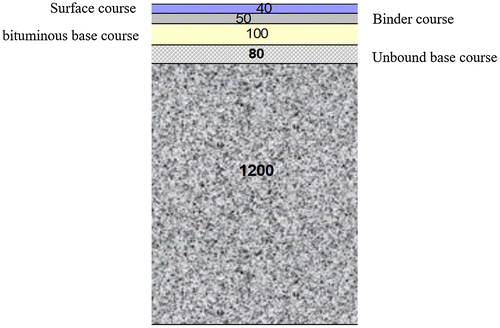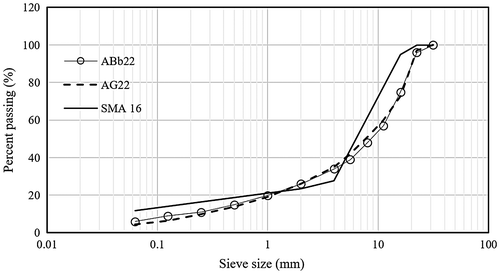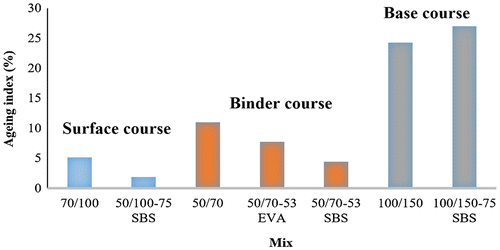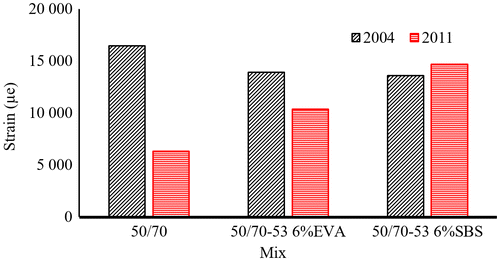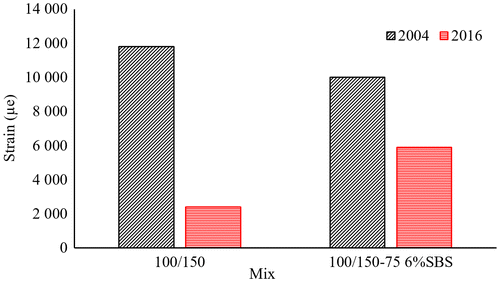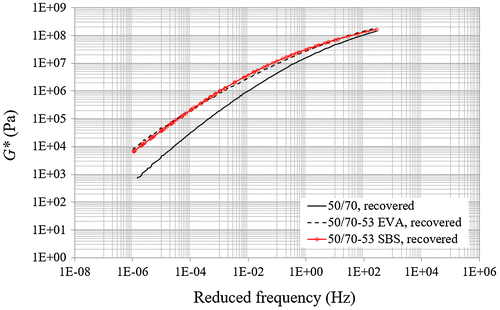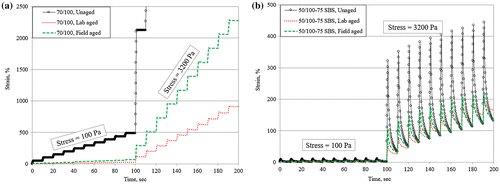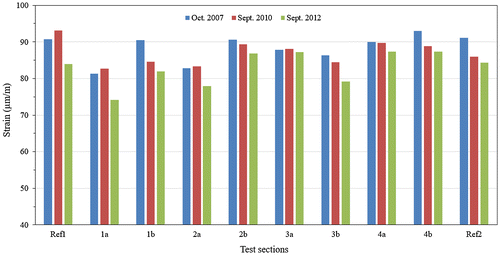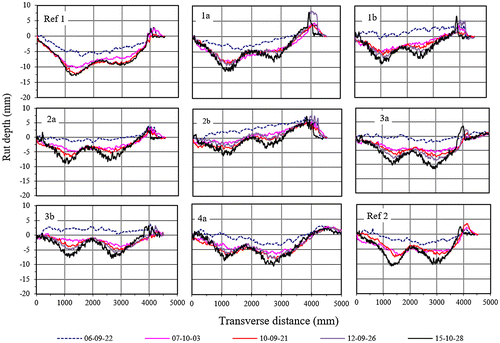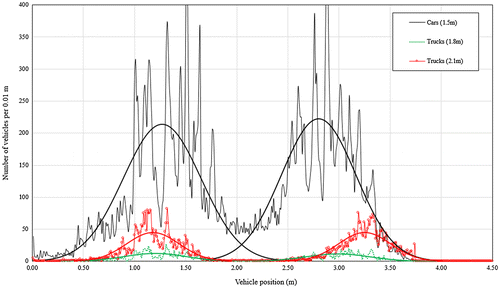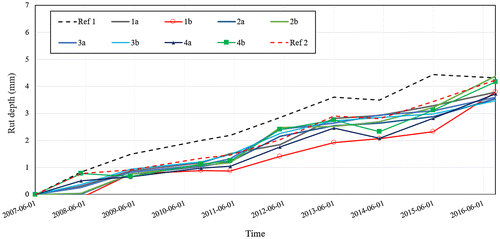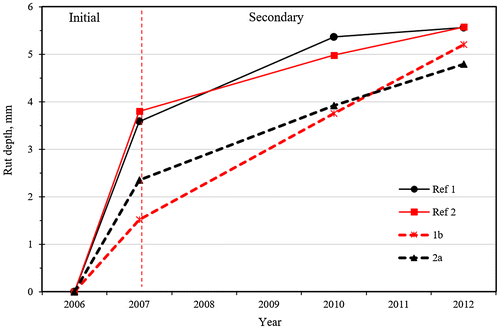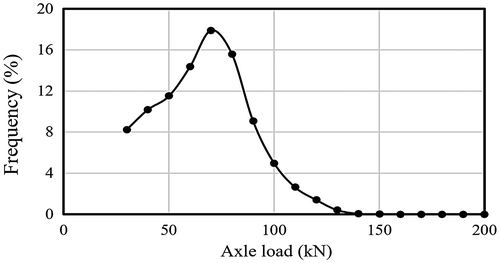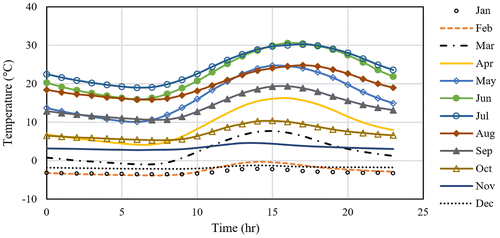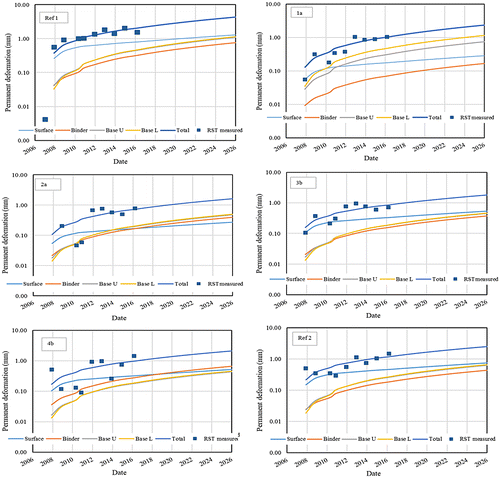Figures & data
Table 1. Description of test structures.
Table 2. Mix composition and properties of the binder.
Figure 3. Master curves of (a) Dynamic shear modulus, (b) Phase angle of the surface course mixes SMA 16 with different binders at a reference temperature of 10°C.
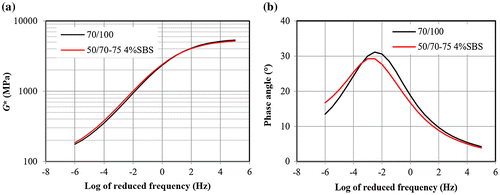
Figure 4. Master curves of (a) Dynamic shear modulus, (b) Phase angle of the binder course mixes ABb 22 with different binders at a reference temperature of 10 °C.

Figure 5. Master curves of (a) Shear modulus of upper base course, (b) Phase angle of upper base course mixes, (c) Shear modulus of lower base course and (d) Phase angle of lower base course, at a reference temperature of 10 °C.
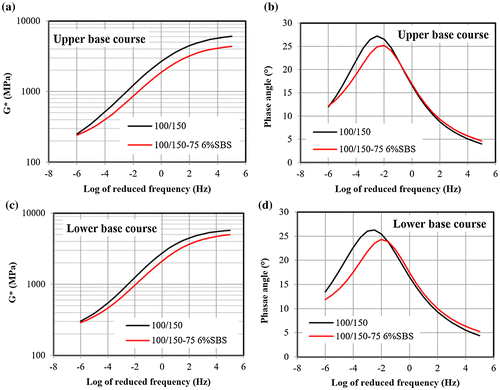
Figure 6. Complex viscosity at peak phase angle; (a) surfacing (SMA 16), (b) binder course (ABb 22) and (c) and (d) upper and lower base courses (AG 22), respectively.

Figure 17. Laboratory-determined fatigue life relationships (a) and service lives of pavement structures based on estimated strains from FWD deflection measurements at 10 °C (b).
